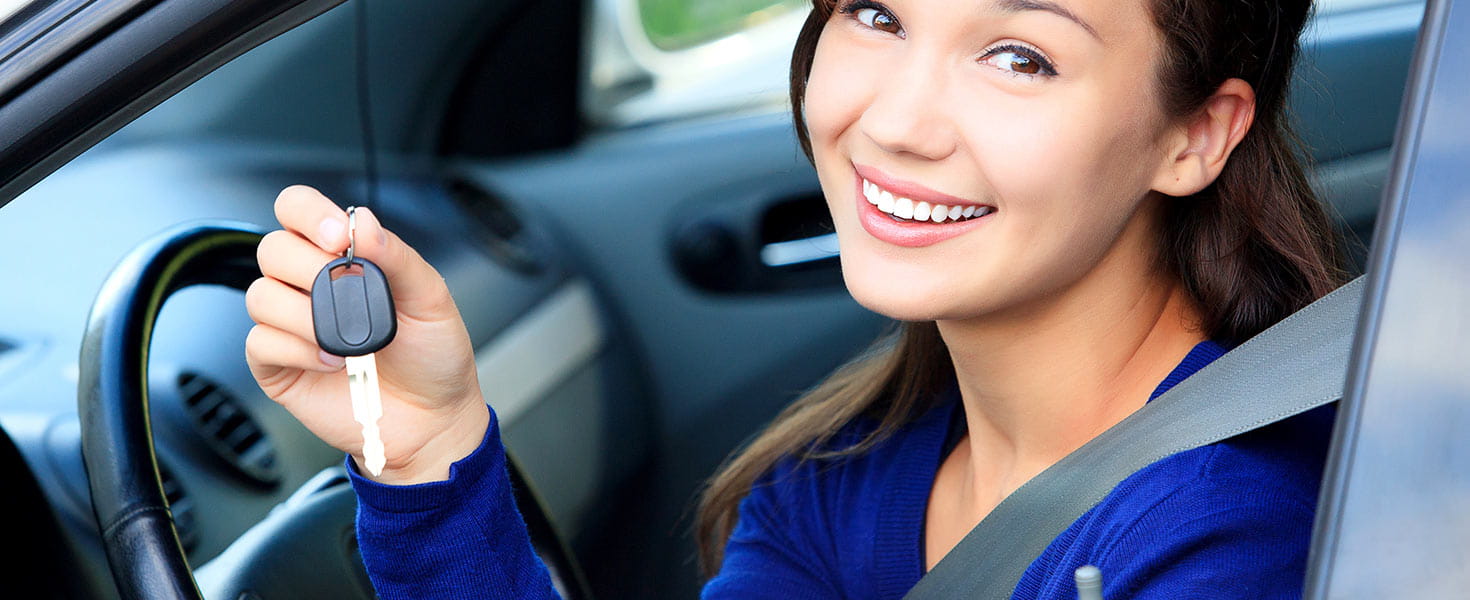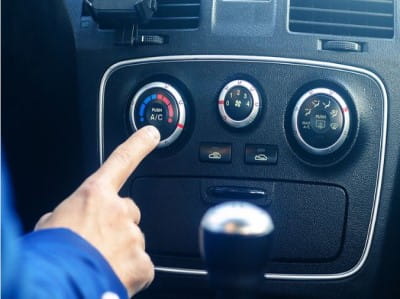
Reduce the Risks
click to expand- Buckle up every time (driver and all passengers)
- Be prepared for adverse driving conditions
- Limit distractions
- Do not speed
- Never drive impaired
- Eliminate drowsy driving
- What to do during roadside events:
- What to do if you’re involved in a crash
- What to do if you’re pulled over by police
- What to do when your vehicle breaks down
What to do if you’re involved in a crash:
click to expand- Assist the Injured. Quickly check with those involved in the collision to determine if there are any injuries. If medical attention is needed, call 9-1-1. If medical attention is not needed, make sure you are not in imminent danger at the roadside.
- Control the Scene. Before taking time to exchange information, get to a safe place. If there are no injuries and the vehicle is drivable, safely move to the right or left emergency lane. Some state laws require drivable vehicles to be removed from the roadway to avoid traffic congestion. Turn on your hazard lights and set out warning flares or reflective triangles. Do not leave the scene of the crash, but find a safe place to remain until emergency services arrive.
- Notify the Police and Submit a Report. The law requires you notify the police. No matter what either party says, call the police and file a report. If the police do not come to the scene to open an investigation, you can file a report by visiting a local police department or automobile insurance agency in the days after a crash. Having a report on file may help later if a liability claim is filed.
- Document the Scene and Exchange Information. It is important to exchange and gather information with all parties involved in the crash, including witnesses. Having this on file will help complete any future paperwork or address potential problems. AAA suggests that you document:
- Names
- Addresses/email address
- Vehicle Information including makes, models and years for all cars involved
- Vehicle identification/license plate numbers
- Driver’s license numbers
- Insurance carriers and policy numbers
- Take photos of the location, people involved and damaged vehicles
- Notify Your Insurance Carrier. Your insurance carrier will need to be notified following a crash to start the proper claim filing. Many insurance companies have staff available 24/7 and can assist immediately. Having proof of insurance in your vehicle is required by law and makes filing a claim easier if not at home.
- Get Your Vehicle Repaired. You have the right to get your vehicle repaired at body shop of your own choosing. In addition to facilities suggested by your insurance company, consider a quality AAA Approved Auto Body shop which can be found by visiting www.AAA.com/Repair.
- Unattended Vehicle or Property. If you are involved in a crash that involves an unattended vehicle or property, take action to inform the owner. If you cannot locate the owner, attach a written notice of the collision to the vehicle or property, being sure to include your contact information and information listed above.
- Drivers and owners of motor vehicles must be prepared to assume legal and financial responsibility if involved in a crash, do not to let your emotions and feelings get in the way of deciding who is at fault. Never allow yourself to be pressured into admitting fault or giving an opinion about the cause of a crash. If you wish, you can consult with an attorney before giving a statement.
What to do if you’re pulled over by police
click to expandStep 1: Pulling Over – How you pull over when you see those flashing lights behind you may determine how the traffic stop goes. Communicate to the officer that you see them and that you are working to pull over. Slow your vehicle down and put on your turn signal.
- Slowly pull over, in a safe location, out of traffic.
- Put your vehicle in park – with your foot off the brake pedal.
- Remain in the vehicle, unless otherwise instructed.
- Turn your radio down to zero volume.
- Roll your window down all the way.
- Keep your safety belt fastened.
- At night: turn your interior light.
- Position your hands at “10 & 2” on your steering wheel or extend them out your window.
- Follow the officer’s instructions.
- Answer all questions truthfully.
- Be patient about learning why you were pulled over – you’ll get the answer.
- Reach for your license and other documents slowly, and only after the officer asks you to provide them. If they are not in your glove box, tell the officer that you are reaching to the back to retrieve them.
- Be honest, courteous and polite.
- If you have a weapon in your vehicle, you are required to tell the officer what it is and where it is located.
Traffic stops can be dangerous for all parties involved if not done properly. It is important to always remain calm and polite when interacting with an officer.
What to do when your vehicle breaks down
click to expand- Note your vehicle’s location. If you encounter a problem while driving, make sure you are aware of your surroundings and general location/mile markers. Know where you are in relation to a major exit or cross street. You may need this information when summoning assistance.
- Pull off the road. On most roads, you should exit onto the far right shoulder, as far off the road as possible while remaining on level ground. If you are driving on an interstate or multiple-lane highway with medians, you may consider the left shoulder, again pulling as far away from traffic as possible.
- Alert other motorists. Make sure your vehicle is visible to other motorists. Remember they may be traveling at a high rate of speed and must be able to see your vehicle from a great distance to stop or move to another lane.
- Communicate your situation. Once you and any passengers are in a safe location, you can notify others of your vehicle breakdown. Remain with your vehicle. Safety experts agree that under most circumstances if you are able to pull away from traffic, it is safest to remain in your vehicle with your seatbelt on until a law enforcement officer or road service provider arrives.
- What to expect from emergency road service. AAA roadside technicians can provide fuel, change tires and boost a battery. AAA battery services include testing and replacement, if the member wishes. In other instances, technicians can employ basic roadside problem solving techniques to get the vehicle going without the need for a tow. If the breakdown is due to more severe mechanical or electrical problems, the vehicle will need to be towed to a service center.
Licensing and State Laws
click to expandUse the links below to determine if your state has a multi-stage licensing process.
Connecticut
Washington DC
Delaware
Indiana
Kansas
Kentucky
Maryland
New Jersey
Ohio
Oklahoma
Pennsylvania
South Dakota
Virginia
West Virginia
Maintaining your vehicle
click to expandDriving isn’t just about how you behave behind the wheel of the car. It’s also about properly maintaining your vehicle. Take good care of your car by improving and maintaining its safety and reliability. To learn more about keeping your car safer on the road, read AAA’s Brakedown and watch AAA’s Making Sense of Car Care video. To find a AAA Automotive expert near you click here.
100 Deadliest Days
click to expandThe period between Memorial Day and Labor Day is referred to as the 100 Deadliest Days. During this time span, we often see more crash fatalities involving teenage drivers.
To keep roads safer during summer, AAA encourages parents to:- Talk with teens early and often about abstaining from dangerous behavior behind the wheel, such as speeding, impairment and distracted driving.
- Teach by example, and minimize risky behavior when driving.
- Establish a parent-teen driving agreement that sets family rules for teen drivers.
- Conduct at least 50 hours of supervised practice driving with their teen.
Driving safely is fundamental: summer, fall, winter and spring, in every season of life. AAA suggests that summer is always a good time for adult drivers to practice safe driving behaviors with their teens. To support parents in conducting practice driving sessions AAA provides a free four-page guide to help parents coach their teens on how to drive safely, “Coaching Your New Driver – An In-Car Guide for Parents.”
This guide offers behind-the-wheel lesson plans, including various “DOs and DON’Ts” to make the learning experience as helpful as possible.
Prom/Graduation
click to expandPREPARE FOR A SAFE PROM AND GRADUATION SEASON
End of the school year celebrations are a special time for teens and a time to remain vigilant about safe driving. According to NHTSA, more than 60% of all alcohol-related traffic fatalities nationwide during prom and graduation seasons involve young people 15 to 20 years old.
Helpful Tips for Teens: Drowsy driving is dangerous driving- Pack a change of shoes-operating a vehicle in dress shoes or heels may interfere with operation of pedals
- Limit distractions inside your vehicle such as passengers, radio, cell phones, and more
- Plan ahead for a safe ride home
- If you feel different, you drive different







